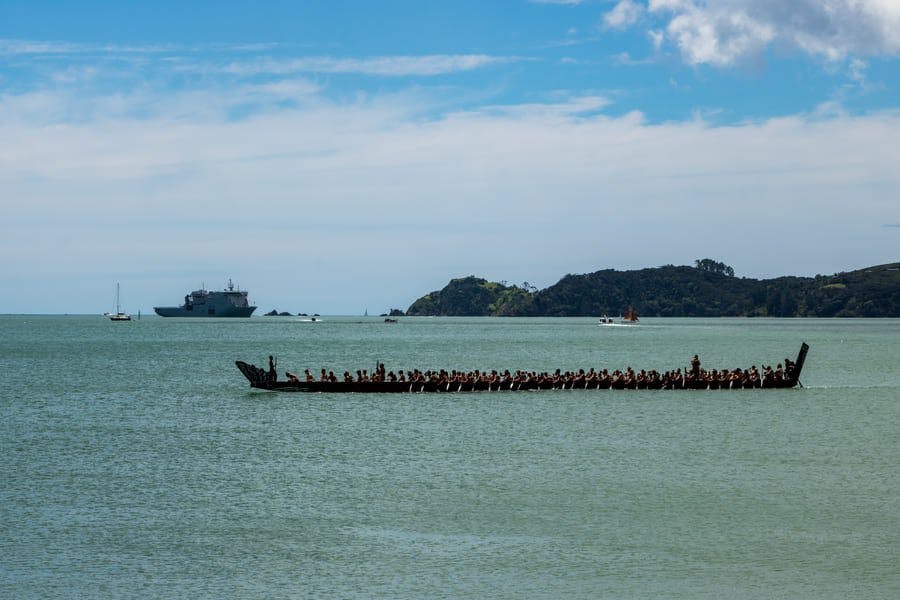Tōtara trees, a Symbol of the Māori Culture

NAME
Tōtara (Podocarpus totara), ‘Tara’ is originally a Polynesian word meaning spiky or sharp and the word ‘tō’ refers to the tree’s height.
ORIGINS & HOME
The Tōtara is found in forests in both the North and South Islands of New Zealand, although it is most common in the northern half of the North Island.
CLIMATE & HABITAT
Subtropical and mild temperate climates in mixed forests subject to periodic volcanic disturbance, grows in both wet and dry conditions, from reasonably fertile acidic to neutral soils and can withstand windy sites.
LONGEVITY
Up to 1,000 years. The Pouakani is the oldest living Tōtara, which is believed to be more than 1,800 years old.
GROWTH
5-25 cm (2-10 inches) / year. Tōtara is New Zealand’s second largest tree – Kauri being the largest.
TREE CHARACTERISTICS
Canopy topped conifer of the rainforest of New Zealand’s North and South Islands, a majestic and ancient giant of prehistoric times. In the rest of the world, conifers are mostly short trees, but in New Zealand, there are the most enormous and unique conifers found on Earth, including Rimu, Kahikatea, Matai and Miro… For more than 65 million years, the Tōtara’s scaly, needle-like foliage has evolved into flattened, board, greenish-brown leaves that are stiff and prickly to touch. This adaptation has been the key to the Tōtara’s success, allowing it to compete with more highly evolved flowering plants that eventually dominated the landscape.
TREE HISTORY & BENEFITS
The Māoris, who first arrived in New Zealand 800 years ago, regarded the Tōtara as a chiefly tree (“rakau rangatira”) above all other native trees, a hardy species that will grow in almost any soil.
"Their durability, their usefulness, their role in waka, their appearance - the red bark with redness being a sacred colour, the bark resembling the fabulous moko of a chief, the chiefliness of the tree growing in the forest."- Philip Simpson, Botanist and Author of "Tōtara"

Its timber is durable, resistant to rot and straight-grained, perfect building material for the Māori who used it for making waka (canoes), houses, tools, weapons, musical instruments, toys and storage containers (patua and pōhā) for preserving food. The huge Māori waka taua, capable of carrying 100 warriors, were often hollowed out from a single Tōtara log. It is one of the best woods for carving with stone tools. Because of its value and special properties, the Tōtara was also a symbol of nobility, chieftainship and social solidarity.
The Māori collected the bright red fruit procured by the Tōtara, which are sweet and juicy with a slightly piney flavour. The Tōtara’s resistance to rot stems from its heartwood, which contains a chemical compound known as totarol. Its antimicrobial properties have been used by the Māori to treat fever, asthma and coughs. Although these anti-inflammatory and antioxidant properties are mainly used topically for eczema, rash, anti-ageing creams, boils, toothpaste, sunscreen, shampoo, and soap, they are subject to the attention of modern scientific research. These antimicrobial substances do not develop in the tree until it is about 150 or 200 years old.
Early European settlers to New Zealand found that this magnificent tree was extremely resistant to decay and used it extensively for construction, which unfortunately resulted in most Tōtara trees being cut down. The tree is now protected, and the use of its wood limited to that of dead trees.
References
1. Tōtara – Podocarpus totara, Meaning of Trees, (2019), Link: https://meaningoftrees.com/2019/02/28/totara-podocarpus-totara
2. Māori Plant use, Landcare Research, Link: https://maoriplantuse.landcareresearch.co.nz/WebForms/PeoplePlantsDetails.aspx?PKey=fb454c7e-cb0c-4d98-9f97-1e9d14d3a080
3. Kiwiherb, Link: https://www.kiwiherb.co.nz/about-us/herb-profiles/totara
4. Botanist Philip Simpson shares his love of totara, ThisNZLife, Link: https://thisnzlife.co.nz/video-botanist-philip-simpson-shares-love-totara/
5. Family Foster Partners: www.familyfosteringpartners.co.uk